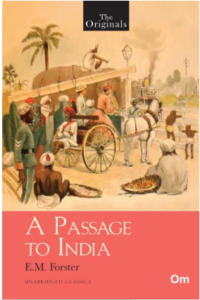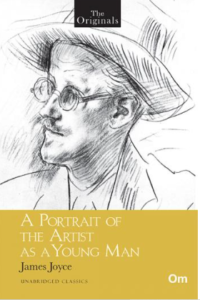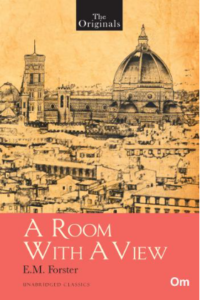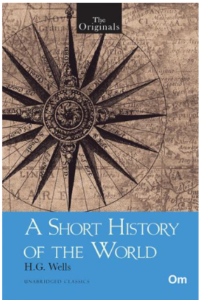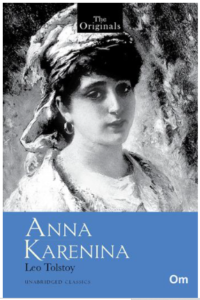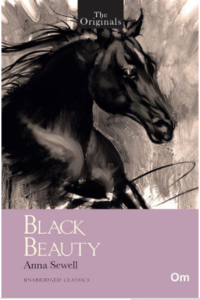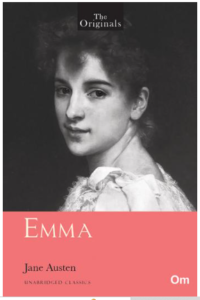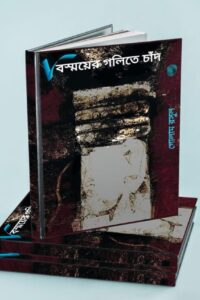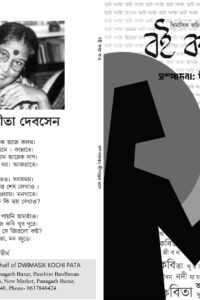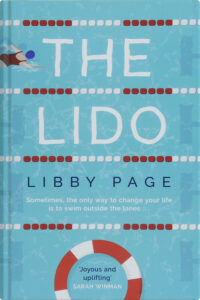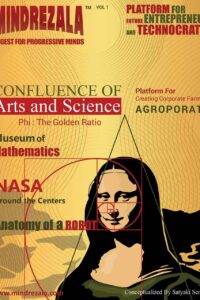16 results
- Brand: Om Books InternationalA Passage to India ( Unabridged Classics): The originals
₹195.00₹147.00About The Book
Life never gives us what we want at the moment that we consider appropriate. British author e.M. Forster novel, a passage to India (1924) is based on the authors impressions of India. He started writing the novel soon after his first visit to the country. The story, set in the 1920s, plays out against the backdrop of the Indian Independence movement. The title of the novel is inspired by American icon Walt Whitman 1870 poem, a passage to India. The novel revolves around four main Characters— Dr. Aziz, his British friend Mr. Cyril Fielding, Mrs. Moore, and Miss adela quest during a day trip to marabar caves, adela mistakenly believes Dr. Aziz is trying to assault her. Dr. Aziz’s ordeal after being falsely accused, the run-up to his trial, and its consequences highlight the underlying tensions between Indians and the British rulers of India of the time. Though foster managed to shine a light on race relations and power imbalances in India during the British Raj, he did not directly condemn colonialism and imperialism in a passage to India.
About E.M. Forster
Edward Morgan ForstEr (1879–1970), British novelist, essayist, short story writer and critic, was born at Marylebone, London. His architect father died when Forster was very young and he was brought up by his mother. Forster’s celebrated works include the novels A Room with a View (1908), Howards End (1910), A Passage to India (1924), and Maurice (1971) as well as a large corpus of criticism. Forster broke new ground by departing from the elaborate, flowery style of his predecessors and adopted a freer, more colloquial style in his books. His novels were seeped in social commentary, which was based on his in-depth observations of middle-class lives. He also had a deep-rooted interest in Mediterranean “paganism,” which called for humans to maintain their connection with the natural world and live a life attuned to the earth’s rhythms.
- Brand: Om Books InternationalA Portrait of the Artist as a Young Man ( Unabridged Classics) : The Originals
₹150.00₹113.00About The Book
“The first novel by Irish writer, James Joyce, A Portrait of the Artist as a Young Man is a coming-of-age tale about the religious and intellectual awakening of the protagonist. In this semi-autobiographical novel, Joyce examines what distinguishes the individual from the social, religious and cultural, by mapping the ever-changing landscape of the mind. Written in a modernist style, the novel traces the journey of young Stephen Dedalus, a fictitious alter ego of Joyce, with an allusion to the skilful craftsman and artist of Greek mythology. Stephen rebels against the Catholic and Irish mores that govern his upbringing, culminating in his self-imposed exile from Ireland to Europe. American modernist poet Ezra Pound had the novel serialised in the English literary magazine The Egotist in 1914 and 1915. Published as a book in 1916 by B.W. Huebsch of New York, Joyce’s debut novel earned him his place as a frontrunner of literary modernism.”
About James Joyce
Born on 2 February 1882 in Dublin, Ireland, James Joyce was one of the most revered writers of the 20th century. His masterpiece, Ulysses, remains an unparalleled literary feat. His exploration of language and his exceptional use of the stream-of-consciousness technique immensely contributed to the modernist avant-garde, inspiring contemporary writers to experiment with fresh perspective.
A brilliant student, Joyce briefly attended the Christian Brothers-run O’Connell School before excelling at the Jesuit schools Clongowes and Belvedere. In 1904, in his early twenties, he emigrated permanently to continental Europe with his partner and future wife, Nora Barnacle. Though most of his life was spent in Trieste, Paris and Zurich, his fictional universe was largely set in Dublin, with characters who resembled his family members, acquaintances, friends and enemies. Joyce’s other well known works include Dubliners, a short-story collection; his first novel, A Portrait of the Artist as a Young Man, which caught the attention of the American poet, Ezra Pound, who praised him for his unconventional style and voice, and the masterly Finnegans Wake. Following the Nazi invasion of Paris, he and his family moved to southern France in 1940. On 13 January 1941, following an intestinal operation, the writer passed away in Zurich, where he is buried in the Fluntern cemetery.Other Books By James Joyce
- Brand: Om Books InternationalA Room of One’s Own – Unabridged Classics (The Originals)
₹125.00₹94.00About The Book
A woman must have money and a room of her own if she is to write fiction. A Room of One’s Own, among Virginia Woolf’s best- known works, is an extended essay, based on two lectures that she delivered in October 1928 at Newnham College and Girton College, women’s constituent colleges at the University of Cambridge. First published in September 1929 as a book, this seminal feminist text makes a case for a literal and figurative space for women writers within a literary tradition dominated by men. Woolf feels strongly that the argument that women produce inferior works of literature must be analysed against the backdrop of their existence and circumstances—unlike men, historically and socially, women are denied the time, space and economic independence to produce artistic and creative works. Nearly a century after the publication of A Room of One’s Own, Virginia Woolf’s observation still seems to ring true.
About Virginia Woolf
Born on 25 January 1882, Virginia Woolf was one of the most influential modernist 20th-century English writers, notable for using stream of consciousness as a literary technique in her works. While writing anonymous reviews for journals, she resolved to ‘re-form’ the novel by experimenting with dreams and delirium. Her novel Melymbrosia, which she completed in 1912 was born out of this determination. Recast and published in 1915 as The Voyage Out, it was about a young woman’s journey of selfdiscovery on her father’s ship in South America. Later, she modelled many of her characters on real-life associates and acquaintances.
At the onset of 1924, the Woolfs moved their residence from the suburbs back to Bloomsbury, where a relationship blossomed between the aristocratic Vita Sackville-West and Virginia. With Sackville-West, she learned to face her anxieties and overcome her nervous ailments. In fact, Orlando, a fantastical biography is partly a portrait of Vita Sackville-West.
One of the most important chapters in her early life was the summer home the family visited in St Ives, Cornwall, where she first beheld the Godrevy Lighthouse. To the Lighthouse (1927) is, therefore, considered one of her most autobiographical novels. Apart from her extremely popular extended essay, ‘A Room of One’s Own’ (1929), her other seminal works include-Mrs Dalloway (1925), Orlando (1928) and The Waves (1931).
In 1941, Virginia Woolf drowned herself in a river, aged 59. Her last work, Between the Acts, was posthumously published later that year.
Other Books By Virginia Woolf - Brand: Om Books InternationalA Room with a View – Unabridged English Classics (The Originals)
₹195.00₹147.00About The Book
It makes a difference doesn’t it, whether we fully fence ourselves in, or whether we are fenced out by the barriers of others? British writer E.M. Forster’s novel, A Room with a View (1908) revolves around Lucy Honeychurch, a young woman who lives in socially conservative Edwardian England. The story, set in Italy and England, is both a romance and a critique of English society in the early 1900s, when upper-middle class English women were starting to dream of leading more independent lives. Lucy’s journey to Italy with her prim and proper cousin, Charlotte Bartlett, is packed with adventure, romance, encounters with people from other cultures, and epiphanies. She falls in love with George Emerson during her stay in Italy, but back home in England, her fiancée is eagerly waiting for her return. Freedom and a whole range of possibilities beckon as Lucy tries to resolve the dilemma and build a new life for herself.
About E.M. Forster
Edward Morgan ForstEr (1879–1970), British novelist, essayist, short story writer and critic, was born at Marylebone, London. His architect father died when Forster was very young and he was brought up by his mother. Forster’s celebrated works include the novels A Room with a View (1908), Howards End (1910), A Passage to India (1924), and Maurice (1971) as well as a large corpus of criticism. Forster broke new ground by departing from the elaborate, flowery style of his predecessors and adopted a freer, more colloquial style in his books. His novels were seeped in social commentary, which was based on his in-depth observations of middle-class lives. He also had a deep-rooted interest in Mediterranean “paganism,” which called for humans to maintain their connection with the natural world and live a life attuned to the earth’s rhythms.
- Brand: Om Books InternationalA Short History of The World ( Unabridged Classics): The Originals
₹295.00₹222.00About The Book
One of the founders of innovative science fiction novels, H.G. Wells was as taken up with the real world as his imaginary realm. Dissatisfied with the quality of history books at the end of World War I, the writer began penning his own history of the world. First published in 1922, A Short History of the World presents a groundbreaking study of the civilisation from the origins of the Earth—spanning the Neolithic Era, the rise of Judaism, the Golden Age of Athens, Christ’s life, the great discovery of America—to the consequences of World War I. Inspired by Wells’s The Outline of History (1919)—a work in three volumes, beginning with Prehistory and following the world’s significant events through World War I—this condensed work chronicles the physical, intellectual and spiritual evolution of the human race. Wells adopts a Darwinian approach and avoids presenting history within a politicised framework. Passionately told, A Short History of the World remains an evergreen classic.
About H.G. Wells
HERBERT GEORGE WELLS was born on 21 September 1866, in Bromley, England. In 1874, Wells, the son of domestic helpers-turned-shopkeepers, had an accident that left him bedridden for months. It was during this time that an avid reader was born. His father would bring him books from the local library and Wells would spend hours devouring the written word. Later, when his mother returned to working as a maidservant in a country house in Sussex, Wells found himself in the owner’s magnificent library, immersed in the works of stalwarts like Jonathan Swift, Charles Dickens, Sir Thomas More, Plato, Daniel Defoe and others. As a teenager, Wells worked as a draper’s assistant but eventually quit. Later, he won a scholarship to the Normal School of Science (later, the Royal College) where he learned about astronomy, biology, chemistry, and physics, among other subjects. All through, Wells nursed the secret desire to become a writer someday. In 1895, following the publication of The Time Machine, Wells became an overnight sensation. The story of an English scientist developing a time travel machine earned him the title of Father of Futurism. Wells’ successive books, often termed as ‘scientific romances’ included The Island of Doctor Moreau (1896), The Invisible Man (1897) and The War of the Worlds (1898) Wells’ works reflected the need for a society that flourished on the ideas and principles of global socialism. Published in 1920, The Outline of History is regarded as Wells’ best-selling work. A champion of social and political ideas, he also ran for Parliament as a Labour Party candidate between 1922 and 192 The visionary author, sociologist, journalist, and historian breathed his last on 13 August 1946, aged 79. - Brand: Om Books InternationalA Tale of Two Cities ( Unabridged Classics): The Originals
₹195.00₹147.00About The Book
It was the best of times, it was the worst of times, it was the age of wisdom, it was the age of foolishness… The year was 1775 and Lucie Manette, a young self- sacrificing orphan, realised she had been living a lie. Her father, Doctor Manette, whom she had taken for dead was, in fact, alive. The self-exiled nephew of the Marquis Evrémonde, Charles Darnay was accused of treason in 1780; Madame Defarge, a victim of the French aristocracy, stitched a hidden registry of those condemned to die; and Sydney Carton, the brilliant yet dissolute alcoholic English lawyer in love with Lucie, were all battling the social ills that had besieged France and England. From the serene lanes of London, they were drawn against their will to the bloodstained streets of Paris at the peak of the Reign of Terror and soon the guillotine cast a lethal shadow over their lives. Originally published in 1859, in weekly instalments in All the Year Round, a British weekly literary magazine, A Tale of Two Cities is a masterpiece which captures the reader’s imagination through its haunting narrative of the French Revolution. A firm believer in the virtues of resurrection and transformation, Charles Dickens presents a moving account of sacrifice and redemption through his best-known work of historical fiction.
About Charles Dickens
Born on 7 February 1812, in Portsmouth, Charles Dickens was one of the greatest novelists of the Victorian era. He created some of the most intriguing fictional characters in literature. The author’s success began with the 1836 publication of the Pickwick Papers, following which he became an international celebrity. Known for his humour, satire and incisive representation of society through his characters, his literary triumphs include A Tale of Two Cities, David Copperfield, Oliver Twist, and Great Expectations. A literary colossus of his time, he wrote 15 novels, 5 novellas, hundreds of short stories and non-fiction articles. He even performed for Queen Victoria in 1851. Such was the charisma of the author that the term Dickensian, is still used to describe situations
reminiscent of his narratives. Literary stalwarts like Leo Tolstoy, George Orwell and G.K. Chesterton admired him for his comedy, prose style and realism. The quintessential Victorian author died in 1870, and was buried in Westminster Abbey.Other Books By Charles Dickens
- Brand: Om Books InternationalA World on Hold: A Living Record of the Global Pandemic
₹395.00₹335.75BOOK WAS PUBLISHED BY OM BOOKS EDITORIAL TEAM.
- Brand: Om Books InternationalAnna Karenina ( Unabridged Classics) : The Originals
₹295.00₹222.00About The Book
Leo Tolstoy’s Anna Karenina was first published in serial instalments from 1873 to 1877 in the periodical The Russian Messenger. A canvas exploring a diverse array of themes—matrimony, politics, philosophy, altruism, adultery, religion and death, it is a masterpiece in realist fiction. Anna Karenina, a married aristocrat and socialite from St. Petersburg, falls in love with Count Vronsky, a suave military officer. Hemmed in by the laws of the Russian Orthodox Church, Anna is indecisive and anxious about leaving her husband and starting a new life with Vronsky. A social outcast, Anna is a voracious reader and detests fakery that she feels her husband epitomises. Unfortunately, with her growing suspicion of Vronsky’s fidelity, her affair brings her more misery than joy. Eventually, her paranoia leads her to taking her own life. ‘Flawless as a work of art’ is how Fyodor Dostoyevsky described Anna Karenina.
About Leo Tolstoy
Leo Tolstoy was born in 1828 in Russia’s Tula Province,Yasnaya Polyana, into an aristocratic family. Regarded as the greatest living novelist by Fyodor Dostoyevsky and Virginia Woolf, Tolstoy’s two seminal works are War and Peace (1869) and Anna Karenina (1878).When he was a student of Oriental Languages at the University of Kazan, his teachers thought he was an incapable student who was unwilling to learn. Unsurprisingly,Tolstoy returned to Yasnaya Polyana. In 1851, reeling under gambling debts, he decided to accompany his elder brother Nikolay, an army officer, to the Caucasus and join the army. He served as a second lieutenant in the Crimean War (1853-1856). It was during this period that the writer in him was born.One of his earliest and most notable autobiographical novels was Childhood, Boyhood, and Youth (1852-1856). Novellas such as The Death of Ivan Ilyich (1886) and Hadji Murad (1912) followed. In his last days,Tolstoy was revered as a moral and religious teacher. Even Mahatma Gandhi sought the Grand Old Man’s advice on non-violence and resistance. In 1910,Tolstoy died of heart failure at the railroad station of Astapovo, Russia. He was 82.Other Books By Leo Tolstoy
- Brand: Om Books InternationalAround the World in 80 Days ( Unabridged Classics) : The Originals
₹150.00₹113.00About The Book
The chance which now seems lost may present itself at the last moment. Jules Verne’s around the world in 80 days (1873) is the story of Phileas Fogg, an affluent English gentleman who leads a solitary life. Though Fogg doesn’t boast of a vibrant social life, he is a member of the reform club. After reading an article in the daily Telegraph about the opening of a new Railway section in India, which promises to make travel around the world possible in 80 days, he accepts a wager for 20, 000 from fellow club members, which will be given to him only if he makes it around the world in 80 days. With his newly employed French manservant Passe-partout, he leaves London by train on 2 October 1872. From rescuing a Raja’s young wife from Sati in the exotic land of India, boarding a train from San Francisco to new York which is attacked by a livid Sioux tribe, to finding a Steamboat destined for Bordeaux, France, the heroic traveller’ adventures continue to mesmerise readers even today.
About Jules Verne
Born on 8 February 1828, Jules Gabriel Verne was a French novelist, poet and playwright who has also been the second most-translated writer in the world since 1979.
Popular for writing about air, underwater and space travel much before submarines or air travel became a reality, Verne was a visionary. Early in life, he began writing for magazines and his collaboration with Pierre-Jules Hetzel led to the creation of the Voyages Extraordinaires series that included Journey To The Center Of The Earth (1864), 20,000 Leagues Under The Sea (1870) and Around The World In 80 Days (1873). A writer of plays, poems, operetta libretti, short stories, essays and miscellaneous non-fiction, Verne, in his works imagined a more harmonious and humanitarian society.
English translations of Verne’s novels began in 1869 with William Lackland’s translation of Five Weeks In A Balloon (originally published in 1863), and continued throughout his writing career, with publishers and translators working together to have his most popular books printed into English language.
On Verne and his influence on literature, Ray Bradbury had remarked, We are all, in one way or another, the children of Jules Verne. - Brand: Om Books InternationalBeyond Good and Evil ( Unabridged Classics) : The Originals
₹195.00₹147.00About The Book
First published in 1886, beyond good and evil by renowned German philosopher and thinker, Friedrich Nietzsche, expands on the philosophical ideas of his thus spake zarathustra. The book presents a sharp critique of morality and the tendency to view morality in binaries of ‘good’ and ‘evil’, thus rejecting the concept of universal morality for all humankind. In this book, divided into nine parts, Nietzsche begins by exposing the deficiencies of the old philosophers, emphasising the need for “free spirits and strongly opposes the ideas of universal morality as propagated by religion, Anti-Semitism and feelings of nationalism. The ideas introduced in this book continue to influence and inspire philosophers all around the world.
About Friedrich Wilhelm Nietzsche
Friedrich Wilhelm Nietzsche (1844 – 1900) was a notable German philosopher who remains one of the most influential modern thinkers. He is renowned for writing on the concept of the super-man, the end of religion in a modern society as well as his exploration of the concepts of good and evil. Some of his major philosophical works are Thus Spake Zarathustra (1883), The Antichrist (1885) and Twilight of the Idols (1889). Many major thinkers of the 20th century such as Jean-Paul Sartre, Sigmund Freud and Albert Camus, among others, were influenced by Nietzsche’s ideas.
After his death, the misappropriation of his works by the Nazi Party in the 30s and 40s of the last century to further their fascist activities resulted in a negative reputation for generations whereas Nietzsche himself was steadfastly against anti-Semitism.
Nietzsche died on 25 August 1900, aged 55.Other Books By Friedrich Wilhelm Nietzsche
- Brand: Om Books InternationalBlack Beauty : The Originals
₹175.00₹132.00About The Book
“If a thing is right, it can be done, and if it is wrong, it can be done without; and a good man will find a way. Black Beauty, a young colt, is raised with love and care by his benevolent master, Farmer Grey. Once he grows up to be a handsome stallion, due to a cruel twist of fate, his master is forced to sell him. Leaving his carefree days on an English farm behind, Black Beauty soon finds himself in the hands of several ruthless owners and carriage drivers in London. Battling the bitterness of his masters, he yearns to return to the freedom and comforts of his country life. Black Beauty, the autobiography of a horse, was written during the last seven years of Anna Sewell’s life. A testimony to her outrage against the ill-treatment of horses in Victorian England and her empathy for animals, it remains an evergreen classic!”
About Anna Sewell
Born on 30 March 1820 in Norfolk, England, Anna Sewell wrote only one books Black Beauty: The Autobiography of a Horse that was published in November 1877. Little did she know that it would become one of the bestselling and most loved classics of all time. From an early age, Anna Sewell assisted her mother, Mary Wright Sewell, a well-known author of children’s books, in editing her manuscripts. For lack of means and fortune, she was home-schooled.
At 14, she slipped and gravely injured her ankles. Following this mishap, she spent most of her life confined to her home, and her mobility depended only on horsedrawn carriages. A fictional autobiography of a high-bred horse, Black Beauty was not just a novel for children. Anna Sewell’s intent behind writing the book was, to induce kindness, sympathy, and an understanding treatment of horses. The use of anthropomorphism as a literary device in Black Beauty stems from her love of horses and her deep resentment against the ill-treatment of animals. Anna Sewell never married. She died in 1878, five months after Black Beauty was published. - Brand: Om Books InternationalCrime and Punishment ( Unabridged Classics) : The Originals
₹225.00₹169.00About The Book
Rodion Romanovitch Raskolnikov, a brilliant yet conflicted student lives in a rented room of a run-down apartment in St. Petersburg. Extremely handsome, proud, and intelligent, Raskolnikov devises a peculiar theory about “intelligent” men being above law. To execute his theory, he contemplates committing a crime. He murders a cynical and an unscrupulous pawnbroker named Alyona Ivanovna and her sister Lizaveta. The act compels Raskolnikov to negotiate and reconcile with his own moral dilemmas. Fyodor Dostoevsky’s incisive psychological analysis of his protagonist goes beyond Raskolnikov’s criminal act, and covers his perilous journey from suffering to redemption. First published in The Russian Messenger in monthly instalments during 1866, Crime and Punishment, Dostoevsky’s second novel following his return from exile in Siberia, is a powerful revelation of the human condition. Is crime acceptable in the pursuit of a higher purpose?
About Fyodor Dostoevsky
Fyodor Dostoevsky, one of the finest psychologists in world literature, was born in Moscow in 1821. Introduced to literature from the age of three, he was very close to his parents and nanny. His literary upbringing was influenced by Alena Frolovna, his nanny, who would read to him fairy tales, heroic sagas, and legends.As a student too, he was drawn to Romanticand Gothic fiction, especially the works of Sir Walter Scott, Nikolay Karamzin, Ann Radcliffe, Alexander Pushkin, and Friedrich Schiller among others. Unlike his contemporary writers, Dostoevsky was not born into the landed gentry.Therefore, his literary works foregrounded the lives of accidental families and of the insulted and the humiliated. His stories explored human psychology in the turbulent socio-political atmosphere of 19th-century Russia.His first novel, Poor Folk, was published in 1846 when he was 25.This gained him entry into St. Petersburg’s literary circles. In 1849, he was arrested for being part of a literary group that discussed banned books of Tsarist Russia. His most acclaimed works include Crime and Punishment (1866), The Idiot (1869), Demons (1872) and The Brothers Karamazov (1880). Notes from Underground (1864), his novella, is considered one of the earliest works of existentialist literature. - Brand: Om Books InternationalDavid Copperfield ( Unabridged Classics) : The Originals
₹295.00₹222.00About The Book
It’s in vain to recall the past, unless it works some influence upon the present. David Copperfield was first published as a serial from May 1849 to November 1850, in 19 monthly instalments. Considered Charles Dickens’ “veiled autobiography”, it was published in a single volume by Bradbury & Evans on 14 November 1850. Born in Blunderstone, England, a fatherless David lives with his mother Peggotty, who marries Edward Murdstone when David turns seven. When Murdstone tries to thrash him, David bites his stepfather. Sent to a boarding school—Salem House—David’s life under the tyrannical headmaster Mr. Creakle becomes even more miserable. After his mother’s death, David travels from London to Dover in search of his great-aunt Betsey Trotwood. From boyhood to adulthood, David meets several characters—Emily, Mr. Wickfield, Agnes, Mr. Spenlow, Dora, Mr. Micawber, Mrs. Gummidge, Barkis, Uriah Heep, Steerforth, and Miss Mowcher, among others. So artfully does the novelist merge with his writerprotagonist that it is difficult to discern where Dickens ends, and Copperfield begins in this evergreen classic.
About Charles Dickens
Born on 7 February 1812, in Portsmouth, Charles Dickens was one of the greatest novelists of the Victorian era. He created some of the most intriguing fictional characters in literature. The author’s success began with the 1836 publication of the Pickwick Papers, following which he became an international celebrity. Known for his humour, satire and incisive representation of society through his characters, his literary triumphs include A Tale of Two Cities, David Copperfield, Oliver Twist, and Great Expectations. A literary colossus of his time, he wrote 15 novels, 5 novellas, hundreds of short stories and non-fiction articles. He even performed for Queen Victoria in 1851. Such was the charisma of the author that the term Dickensian, is still used to describe situations
reminiscent of his narratives. Literary stalwarts like Leo Tolstoy, George Orwell and G.K. Chesterton admired him for his comedy, prose style and realism. The quintessential Victorian author died in 1870, and was buried in Westminster Abbey.Other Books By Charles Dickens
- Brand: Om Books InternationalDon Quixote ( Unabridged Classics ) : The Originals
₹295.00₹222.00About The Book
There is no book so bad…that it does not have something good in it. One of the earliest classics from the Spanish Golden Age known as ‘the first modern novel’, Miguel de Cervantes’s Don Quixote was published in two volumes. The first volume published in 1605, became a runaway success. Ten years later, in 1615, the second volume was published. Having devoured innumerable chivalric romances, Alonso Quixano, under the name Don Quixote de la Mancha, sets out on an adventure to restore order in the world. Sancho Panza, his faithful squire, responds to Quixote’s sermons on knighthood with wit and pragmatism. During his expedition, the knight-errant visits an inn imagining it to be a castle, fights with impudent sorcerers, chases windmills thinking them to be giants, and steals a barber’s basin mistaking it to be the mythic Mambrino’s helmet among other absurdities. Through his protagonist’s ludicrous transformation, Cervantes, not only redefined the form of the novel but also created a thinking, critical reader. “If there is one novel you should read before you die, it is Don Quixote,” said Ben Okri, Booker Prize winner, of this masterpiece.
About Miguel de Cervantes
Spanish novelist, playwright, and poet Miguel de Cervantes was the creator of one of the world’s finest literary masterpieces, Don Quixote. Born near Madrid in 1547, his formative years were spent in economic adversities.
In 1571, when Cervantes was serving as a soldier in the Battle of Lepanto, he was gravely injured. In 1575, after fighting in military campaigns against the Turks, he was captured and kept as a slave for five years.
In 1597, he landed back in jail in Seville over dealings with fraudulent bankers. During this time, the idea for Don Quixote was born. The first volume was published in 1605 and became an instant success. Over time, it was translated into more than 60 languages. The second volume was published in 1615.
The author of seminal works like La Galatea, Rinconete y Cortadillo, and Novelas ejemplares (Exemplary Novels), Cervantes influenced Spanish literature so much that Spanish was often called la lengua de Cervantes (language of Cervantes).
Cervantes’s works have inspired stalwarts like Fyodor Dostoevsky, Gustave Flaubert, and Henry Fielding among others.
In 1613, William Shakespeare, a contemporary and an admirer of Cervantes, wrote The History of Cardenio (universally known as Shakespeare’s lost play), based on Cardenio, a character borrowed from Don Quixote. Miguel de Cervantes died in 1616. - Brand: Om Books InternationalDon’t Sell Make Them Buy
₹295.00₹236.00Book was Published by Om Books.
- Brand: Om Books InternationalEmma ( Unabridged Classics) : The Originals
₹175.00₹132.00About The Book
“Time will generally lessen the interest of every attachment not within the daily circle. Emma Woodhouse, a headstrong, beautiful and witty twenty-year-old resident of the village of Highbury, is overconfident about her matchmaking skills. Conjuring successful love matches is an art she thinks she has mastered especially after her self-proclaimed accomplishment at finding Miss Taylor, her governess, a suitable partner in Mr. Weston, a village widower. Next, she takes it upon herself to find a perfect match for her friend Harriet Smith. She even convinces her to refuse the proposal of Robert Martin, a well-to-do farmer. While Harriet cannot deny her feelings for Mr. Martin, Emma wishes her friend to be a gentleman’s wife. Mr. Knightley, Emma’s brother-in-law, observes Emma’s matchmaking efforts and is contemptuous of her meddling. What follows in this circuit of misconstrued romances is a series of conflicts, misunderstandings and suspicions. Is Emma overestimating her ability as a matchmaker or Mr. Knightley being unnecessarily critical of her motive? Emma (1815) was Jane Austen’s last novel to be completed and published during her lifetime.”
About Jane Austen
Born on 16 December 1775 in Steventon, Hampshire, Jane Austen was one of eight children of George Austen, a clergyman, who assisted as the rector of the Anglican parishes. Jane began writing as a teenager. In 1783, along with her sister Cassandra, she was sent to Oxford where she was taught by Mrs Ann Cawley. When the sisters caught typhus, both were sent home and Jane attended boarding school in Reading from early 1785. Since the Austen family couldn’t afford the school fees, Jane returned home in 1786. In 1796, Jane began writing First Impressions and completed the first draft in August 1797, (later published as Pride and Prejudice). During this time, her father tried publishing one of his daughter’s novels. In her early years, Jane had unrestricted access to her father’s library and her father too would provide her expensive stationery to encourage her. In 1797, George Austen wrote to Thomas Cadell, a famous publisher in London, asking if First Impressions could be considered. Meanwhile, during mid-1798, Jane began working on Susan (later published as Northanger Abbey). Again, the manuscript was offered to a London publisher who paid 10 pounds for the copyright. The book remained unpublished for a long time and eventually, Jane had to repurchase the copyright from the publisher in 1816. Northanger Abbey was published posthumously in 1818. In 1816, Jane’s health deteriorated due to Addison’s disease, and she went to Winchester for treatment. She died there on 18 July 1817. As a writer, Jane achieved critical acclaim only after her death. Her body of works include Sense and Sensibility, Pride and Prejudice, Mansfield Park, Emma, Northanger Abbey and Persuasion. In 1833, her works were republished in Richard Bentley’s Standard Novels series, and illustrated by Ferdinand Pickering. These became immensely popular and almost 52 years after her death, in 1869, her nephew published A Memoir of Jane Austen, reintroducing the writer to her readers. Other Books By Jane Austen

